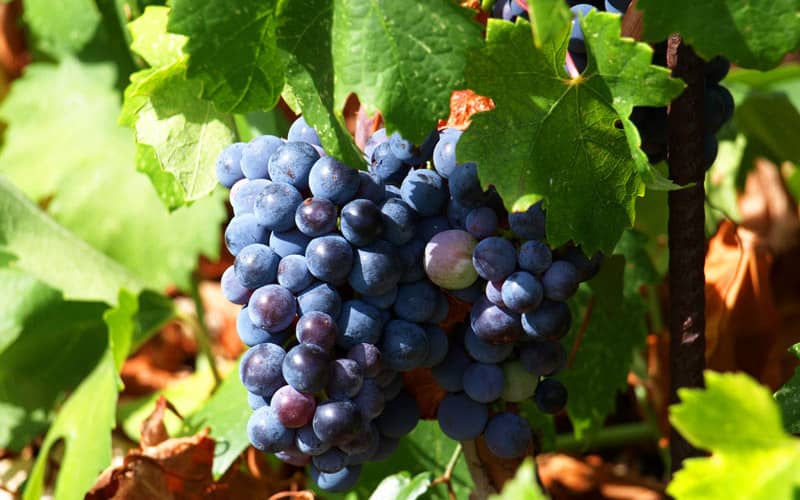Plavac Mali, the most enchanting of Croatian viticulture's tongue twisters, is an indigenous black grape variety renowned for producing medium to full-bodied red wines. Its name, when translated, means "Little Blue One" or "Small Blue," a fitting description of its small, blue-hued berries with their thick, tannin-rich skins.
Interested in other Croatian wine varieties? Read our Guide to Croatian Wines.
Origin and Meaning of "Plavac Mali": The "Little Blue" Grape
Derived from parent varieties Crljenak Kastelanski (better known as Zinfandel) and Dobricic, Plavac Mali has risen to prominence, dominating vineyards in the karst, hilly terrains of Croatia's Dalmatian region. Here, the predominantly limestone-rich soils, often steeply sloping towards the azure waters of the Adriatic, create ideal growing conditions.
The combination of sea breezes and intense sunlight keeps the region dry and immune to fungal diseases. Porous ground swiftly absorbs rainfall, preserving moisture in lower layers during the scorching, arid summers. Grapevines tap into this reservoir through extensive roots, some extending up to 10 meters deep.
Wine Lover's Tour of Peljesac Peninsula
Embark on a Wine Lover's Journey through Southern Dalmatia's Finest Vineyards.
Southern Dalmatia holds a treasure trove of regional wines. Dive into the heart of the Pelješac peninsula on a captivating wine tasting tour. Learn about the rich tradition of wine making by visiting two charming rural wineries, each with its own unique character.
We also explore the historic town of Ston, famous for its salt production and delitious oysters. Bask in the personalised attention of a small-group setting, where you can truly savoir the nuances of each wine.

Parent Varieties: Tracing Plavac Mali's Lineage
Parent varieties of Plavac Mali are Crljenak Kastelanski (Zinfandel) and Dobričić. Over time this variety has taken over and dominated the vineyards in karst, hilly areas of Croatian region of Dalmatia.
Ideal Growing Conditions: Limestone-rich Soils and Sloping Terrains
The predominantly limestone-rich soils, often steeply sloping towards the azure waters of the Adriatic, create ideal growing conditions for Plavac Mali. Grapevines tap into this reservoir through extensive roots, some extending up to 10 meters deep. The combination of sea breezes and intense sunlight keeps the region dry and immune to fungal diseases.
Aromas and Profiles: Exploring Plavac Mali's Wine Range
Plavac Mali wines range from fruity, medium-bodied reds with invigorating acidity, boasting aromas of sour cherry, red plum, liquorice, and sweet spices.
Dingac: A Geographical Pinnacle for Robust Plavac Wines
At the opposite end of the spectrum are thick, chewy Plavac Mali wines of the hottest areas like the protected geographical appellation of Dingač of Pelješac Peninsula.
Innovation in Plavac Mali: From Astringency to Vitality
Exploring this versatile variety is a recent endeavour, with numerous small-scale winemakers having their own idea of what the perfect Plavac Mali should be. Until very recently, these wines were often a bit too astringent and heavy. Today, various techniques are used to keep Plavac Mali wines delicious, vibrant and within reasonable alcohol levels.
Perfect Pairings: Foods that Elevate Plavac Mali Wines
Pair your Plavac Mali wines with high protein foods as well as some high fat foods, anything from tuna steaks and aged beefsteaks to blue cheese. Expressive Plavac Mali with a bit of oak influence will pair well with dark chocolate as well.
Plavac Mali's Role in Dalmatian Viticulture
Synonymous with central and southern Dalmatia Plavac Mali yields a diverse range of red wines, from robust and intense to fruity and fresh.